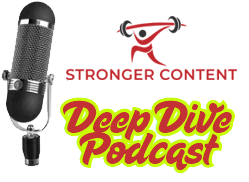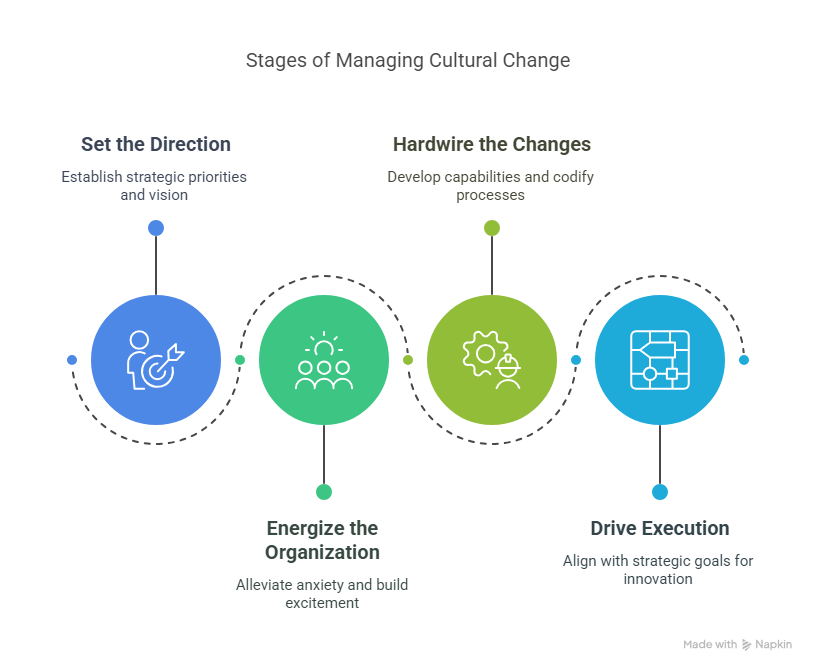MAY NOT BE REPRODUCED WITHOUT PERMISSION

After acquisition, the first 100 days are crucial. Leadership is needed in four specific areas: strategy, people, financials, and infrastructure. Each aspect must be aligned post-acquisition to create the platform for success. There are significant decisions that will have to be made — and quickly — for an efficient integration.
Your integration requires careful planning and agility. No matter how much work you put in during your M&A due diligence, there are always things you will uncover after the papers are signed. According to McKinsey & Company, “almost 50 percent of the time, due diligence conducted before a merger fails to provide an adequate roadmap to capturing synergies and creating value.” You will need to take these into account as you work through your checklist and build them into your integration roadmap.
Five Fundamental Truths in Setting M&A Expectations
Before you begin the work, however, you need to understand the five fundamental truths that will impact the work you do.
- Performance: Each business must continue to perform. You do not want to negatively impact either business during the transition period.
- Integration: While you want to integrate as quickly as possible, you also need to do it prudently. It’s more important to get it right than just get it done.
- Disruption: While you want to minimize the impact, disruption is unavoidable. There will be times when everyone will feel the impact.
- Communication: Throughout the entire process, communication is key to ensure employees know what is happening, when it is happening, and why it is happening.
- Moving forward: Stop using the old company name as soon as possible to help employees understand there is a new focus moving forward.

Consider these truths as guiding principles as you work through the integration to minimize impact and accelerate progress.
Targeting Personnel Issues
Managing people during the transition is job one. You want to keep strong performers and develop opportunities for top talent to achieve. If you are making personnel changes, do it as quickly as possible to allow everyone to know when changes are complete. While some people may have to leave the company or adjust to new roles, nobody wants the sword hanging over their head wondering when — or if — it’s going to swing in their direction.
Whenever possible, ensure everyone keeps their initial hire date and tenure and is provided with competitive compensation. Nobody wants to move backward in pay or benefits.
Transparent communication, one of your five fundamental truths, is central to managing through employee concerns. Connecting changes to organizational goals is crucial to empowering employees. During the first 100 days, leaders need to be present, visible, and accessible. If leaders are constantly huddled in offices and meeting rooms, it fosters an atmosphere of secrecy. Availability and openness provide a forum for discussion to ease fears.
Prioritizing Change Management
Employees and clients didn’t ask for this to happen. Change is being imposed on them. It’s your job to manage through this and help everyone see the changes as a positive force. It won’t be seen that way by some — maybe employees had a bad experience with working for a larger company or going through a transition period.
In some cases, you can’t protect everyone’s position and status. This can impact performance and demoralize some team members. You need to be aware of the cultural dynamics and proactively address changes. According to the Standish Group, just 31% of change projects are considered successful. That means nearly 70% fall short of expectations.
Ignore change management at your own peril.
You also need to manage your clients and customers. They may or may not see change as a positive force. Perhaps the salesperson or manager they’ve dealt with in the past is leaving or your ordering system will be different. Prioritizing — and communicating — change management practices across internal and external stakeholders is crucial for successful integration.
Managing the Stages of Cultural Change
Managing cultural change has its own stages. To bring together organizations into a blended culture, McKinsey & Company recommends corporate leaders guide teams through these stages:
1. Set the Direction
It is imperative to incorporate strategic priorities for the combined organization, including the culture to support these priorities. Setting the direction includes articulating the vision — consistently and regularly — while effectively communicating the operating model and performance expectations.
2. Energize the Organization
Mergers and acquisitions inject anxiety into organizations. Company leaders must express optimism and ease those concerns. That’s one reason why personnel changes need to happen quickly to alleviate concerns about additional job losses.
Beyond that, however, leadership must now transition organizations from relief to excitement about the new structure and future opportunities. Growth can be accelerated by developing compelling change stories and demonstrating progress.
3. Hardwire the Changes
Employees begin to settle into the new structure. The infrastructure is in shape. Processes are defined. Now, it’s time to build the essential capabilities and codify them with policies and governance.
As legacy systems start to phase out, changes start to become standard operating procedures.
4. Drive Execution
In the final phase, it’s to go past integration and adoption to acceleration. As the entire organization is now unified, driving execution — aligned with strategic goals — is the pathway to innovating and growing the company.

Building Your Integration Timeline
These two items — personnel and change management — must be part of every item on your integration checklist to build a foundation for success.
The first 100 days must focus on the key activities to follow the crucial paths to ensure business continuity. It is crucial to define operating models and develop the core components and organizational levers. Detailed integration and execution plans and formalize your integration roadmap while implementing monitoring tools and KPIs focused on the integration itself.
Let’s break down some of the key steps in each of the early months
Month 1-2: Look, Listen, and Learn
The early stages of integration require immersive learning across both legacy environments while establishing strong lines of communication. Look for quick wins where you make changes, but resist the temptation for quick fixes until assessments are complete. You don’t want to have to undo decisions you’ve already made.
Some key steps include these best practices:
- Forming a centralized, cross-functional integration management office to govern the effort, with sub-teams allocated by functions like HR, IT, facilities, and finance. Establish clear metrics and reporting cadence.
- Scheduling comprehensive current state assessments for infrastructure, applications, workflows, policies, and vendor contracts. Produce heat maps highlighting duplication, gaps, and outdated solutions.
- Developing initial application rationalization priorities balancing business criticality, end-of-life status, and complexity. Quick wins build confidence while complex migrations require more in-depth planning.
- Assigning peer buddies across departments and legacy companies for shadowing. Site visits, open forums, and demonstrations foster organic relationship-building and knowledge sharing.
- Launching regular town hall meetings as a forum for leadership updates, Q&A exchanges, and direct feedback from all levels of the organization. Share any early integration successes publicly to demonstrate fast progress.
- Conducting user and customer surveys at the 30- and 60-day marks. Analyze technology familiarity, tools effectiveness, and support experience. Consider feedback and whether adjustments need to be made.
- Developing the 12-month high-level roadmap and detailed plans for Months 1-4. Focus initial integration on foundational systems like email, collaboration tools, networks, and Single Sign-on (SSO) which enable future change.
During this initial period, you must confirm the accuracy of pre-acquisition due diligence and gain an understanding of information and infrastructure requirements. For example, understanding how the current infrastructure of the two business entities work, where they are aligned with business goals, and where adjustments need to be made.
Evaluating the Current State for Future Vision
At the onset of integration planning, taking inventory of the collective environment (warts and all) establishes the blueprint. Resist early assumptions; thorough current state assessments uncover priorities that may be hidden in the complex infrastructure.
Discovery questions help qualify the art of possible. For example:
- Can systems adapt to shifting needs?
- Do costs outweigh utility?
- What risks manifest from years of fragmented oversight?
- Are systems futureproofed?
An integration’s success springs from this foundation.
Defining actionable synergies requires confronting hard truths. Success means supporting business goals, not just preserving the status quo. Deliberate planning gives way to agile progress when mutual understanding guides technology integration decisions and they may be different from a traditional approach.
A traditional approach would have the acquired company adopt the systems and processes of the acquiring company. Yet, there may be efficiencies and synergies lurking among both companies. It is crucial to evaluate the infrastructure and tools to find the optimal solution. The underlying value of each system needs assessment. If it doesn’t add value, it needs to be eliminated. It’s often more efficient to scrap legacy systems that aren’t adaptable — or futureproof — and adopt a new system to merge data sources.
Understanding the Current State of Affairs
It is also important to understand the current in-flight projects or initiatives and current problems or issues that produce bottlenecks. When new systems or processes can eliminate these bottlenecks, employees are more like to embrace a new way of doing things.
Ramping Up Execution
With core knowledge transfer activities after the first 60 days, execution ramps up while planning for larger system migrations gets underway. Maintaining open dialogue and transparency sets the stage for the busier months ahead.
Month 2-4: Align Organizations
As enterprise-wide adoption of shared systems increases, the second quarter is a crucial window for integrating and centralizing the underlying infrastructure, processes, and policies. While users acclimate to new working environments, transformation teams have an urgent need to establish standardized ways of operating.
Months two through four of integration focus intensely on centralizing key infrastructure, systems, and collaboration capabilities to firmly establish one, unified company.
Best practices for aligning your organization include:
- Rolling out unified intranet, branding, messaging, and collaboration systems in phases across functional groups to enable testing and feedback.
- Retiring legacy tools once cutover is complete to avoid continued use.
- Implementing Master Data Management for applications with an interim timeline to full decommission, synchronizing during the transition period.
- Establishing a pilot group from both legacy environments to prove updated finance and HR policies, workflows, and system access ahead of companywide rollout.
- Beginning transition of level-one infrastructure like WAN connectivity and WiFi to enable office consolidating. Maintain redundancy of core networking during cutovers to avoid potential downtime.
- Scheduling and updating visible milestones to demonstrate progress. Capture quick-win success stories to showcase benefits.
- Continuing town halls, surveying, and monitoring adoption metrics for new tools.
- Standardizing security policies, access controls, and workflows across infrastructure and applications, paying attention to exception handling for unique systems.
- Documenting your new network topology to inform the development of future-state architecture.
As enterprise-wide adoption of shared systems increases, the second quarter is a crucial window for integrating and centralizing key components across the business.
Enabling Self-Service Access
With unified authentication and access controls established, this phase focuses on empowering employees through self-service. Automated user provisioning and identity management solutions streamline access requests while restricting unauthorized systems.
Adding wikis and knowledge bases can provide additional resources for employees, especially for basic how-to type inquiries. Offering AI-powered chatbots and self-service portals can help with tasks like password resets. Such support shifts repetitive manual work off IT teams, so they can continue to focus on remaining integration tasks.
Optimizing Core Business Systems
While collaborating and accessing systems unify, transforming core platforms like finance, HR, and procurement is pivotal. Though optimized architectures may take shape over years, establishing future-state foundations is crucial to building systems with longevity.
Whether one of the company’s systems is adopted, or a new system is put in place, data migration and consolidation will occur with a high focus on data integrity.
Centralizing Infrastructure and Security
Behind the scenes, networks, data centers, operations teams, and security must come together to consolidate systems. SecOps is front and center here amid dismantling systems, reducing risks, and providing comprehensive data security.
Beyond the First 100 Days
The first 100 deals are the most critical to creating long-term momentum. If initial goals aren’t met, the integration project risks stagnation. There is a narrow window of opportunity to set the pace of change and establish the building blocks for the future. Assuming that the first 100 days have progressed as planned, integration teams can take a breather — but only for a moment.
Time marches on and so does company business. Building on success in the first 100 days and moving companies forward through the first year has its own set of challenges and opportunities that must be addressed.
Month 4-9: Customization and Optimization
Core business systems should be functioning, but likely require further customization and optimization to enhance efficiency. This is also the time to standardize all processes and tools across the broader organization.
Standardizing Tools and Processes
Systems like enterprise resource planning (ERP) and customer relationship management (CRM) often require customization. While challenging to balance standardization and flexibility, analyzing adoption metrics and gathering user feedback helps identify where systems can be improved.
Change management ensures employee feature requests don’t override optimized workflows. Ongoing training and transparent communication smooth transitions as new functions roll out.
Optimizing Architecture
With systems in place, you can now gather the performance data and usage patterns from newly integrated systems. This data can inform adoption and identify areas where additional training is needed. Monitoring resource allocation, availability, and scalability identifies infrastructure gaps that may need better alignment.
This is a key milestone in which outdated or inefficient systems are finally decommissioned after running in parallel to let users adapt.
Month 9-12: Maturity and Innovation
With the bulk of consolidation complete, it’s finally time for IT leaders to assess digital maturity and begin to innovate new solutions to maintain momentum. Transition teams give way to digital and R&D groups, developing transformation roadmaps to build on the synergized technology.
The First 100 Days Set the Tone
Throughout every stage of integration, business leaders must stay focused on core objectives with active measurement in place. As time passes, it becomes harder to change culture, so the first 100 days set the tone. This period can lead to a bright post-merger future or it can fail to deliver on its goals. Only by measuring the results of your change initiatives can you demonstrate success and build confidence in team members, investors, and customers.
Building a 100-day roadmap, setting the agenda for change, and building a solid foundation are crucial steps post-merger. It takes a strong plan and commitment along with relentless execution and dedicated leadership. When done properly, it can produce long-term results and a foundation for sustainable growth.
IMAGE: Bing AI Image Creator

